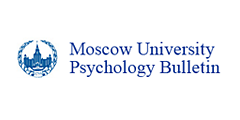
Department of Psychiatry for the Elderly, CHRU de Brest,
Bohars, France
-
Narrative analysis in Alzheimer’s disease
-
Background. Alzheimer’s Disease (AD) is a neurodegenerative illness, which occurs with increasing frequency as people age. While progressive memory impairment is the upfront element associated with the disease, other neurocognitive troubles are also associated with it, such as language impairment which can degenerate into aphasia. Language disorders interfere and worsen the functioning of memory.
Aim of the study. To evaluate semantic and textual impairment in AD patients.
Methods. The current study involved 151 AD patients undergong consultation at Brest University Hospital. Certain socio-demographic data (sex, age, cultural levels) were collected, as well as results from the following neuropsychological tests: Folstein (MMSE); Dubois’s 5-word test; Dubois’s frontal assessment test battery (fluencies); Cornell’s scale for depression; and Barbizet’s test ( “The Lion’s tale”). All were subject to textual analysis. Our sample of demented patients included 102 females and 49 males of average age 80.3 ± 6.91.
Results. All the tests, including the number of items recalled much later in the Barbizet’s test, showed impairment, all the more by Folstein’s test being altered. The demented patients’ formal fluency was less impaired than their semantical lexical fluency (scored respectively 5.74 ± 1.09 versus 4.41 ± 2.19; t = 5.60, p < 0.01). The demented cohort exhibited more intrusions (n = 36) than inversions in the delayed recollection of the Lion’s Tale, both for items and the episodes in which they occurred (n = 19). The regressive PLS analysis showed that, to explain the overall scores relating to “ e Lion’s Tale”, calculated later, only attainment of lexical fluency had any notable influence (Regression coefficient CR=0.224) or, more accessorily, the cultural level (CR = 0.12).
Conclusion. AD patients’ proficiency in tests of category fluency and their cultural levels have effects on narrativity.
DOI: 10.11621/pir.2018.0310
Keywords: Alzheimer’s Disease, semiotics, semantics, textuality
-









